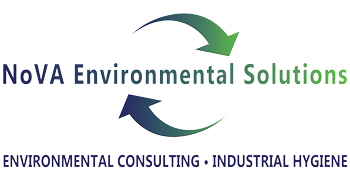What is a Phase 1 Environmental Site Assessment and what is its purpose?
A Phase 1 Environmental Site Assessment (ESA) occurs usually at the start of the environmental due diligence process and is completed during the process of a real estate transaction. A Phase 1 ESA includes documentation of the current and historical use of the property being examined and identifies Recognized Environmental Conditions (RECs). The Phase 1 ESA report will provide recommendations for the RECs identified on the property as well as RECs that may influence the property. Phase 1 ESAs are typically used for all types of real estate transactions but are most common in commercial property transactions.
One of the main purposes of a Phase 1 ESA is to identify existing and potential environmental hazards to provide the buyer and lender information before purchasing the property, as well as gain innocent landowner protections. The Comprehensive Environmental Response, Compensation and Liability Act (CERCLA) requires the environmental due diligence process, if this process is not completed, the owner of the property could be legally responsible for the environmental hazards on the property. A Phase 1 ESA can meet the requirements associated with CERCLA’s innocent landowner defense under All Appropriate Inquiries (AAI) through landowner liability protections (LLPs).
The following are the three categories of LLPs (do not apply to all purchasers):
1. Contiguous Property Owner – Prospective landowners who purchase a property knowing that contamination has been caused from a contiguous property
2. Innocent Landowner – Property owner did not know and had no reason to believe that the property was contaminated or had environmental hazards
3. Bona Fide Prospective Purchasers (BFPPs) – Prospective landowners who knew contamination was present and gain protection from liability if they meet the purchase requirements similar to the Contiguous Property Owner
What Recognized Environmental Conditions (RECs) are included in a Phase 1 ESA?
In a Phase 1 ESA, a REC is the presence or likely presence of hazardous materials or petroleum products that are in/on/or present at the property being investigated that are:
- Under conditions that indicate a release to the environment
- Under conditions that may cause a threat of future release to the environment
- Due to release or released into the environment
Examples of Phase 1 ESA RECs include:
- Underground storage tanks
- Stored solvents, Petroleum products, metals, polychlorinated biphenyls (PCBs), and poly- and per-fluoroalkyl substances (PFAS) (involved with auto repair shops)
- Solvents and degreasers
- Heavy industrial complexes
- Current and historical dry-cleaning businesses (may involve tetrachloroethylene (PCE))
- Regional National Priorities Listing and sites with historical contamination
What is involved in a Phase 1 ESA?
Phase 1 ESAs are conducted by Environmental Professionals in accordance with ASTM E1527-13 standards and involve gathering information through reviewing records and historical information, performing a site walkthrough, conducting interview with people involved with the property, and organizing the findings into a comprehensive report.
During the records review stage, an environmental professional will gather the following types of information:
- Current and past aerial photographs and topographic maps
- City or Municipality directories
- Environmental Database Map Reports
- Historical information regarding the previous uses of the property
The next stage of the process is the site inspection, where the environmental professional will examine the property, any structures on the property, and note the adjacent properties. The environmental professional will take photographic documentation of the conditions on the property as well as noting any observable RECs that are present on or near the site.
During or after the site inspection, the environmental professional will conduct interview with previous owners, workers, occupants, local government officials, and other people involved with the property to gather more information on the previous uses of the property.
After gathering this information, the environmental professional will complete a report that documents the findings, identifies any limitations or gaps in information, provide conclusions based on the findings and recommendations regarding if further investigation of any identified RECs is necessary.
If any RECs are identified during the Phase 1 ESA, a Phase 2 ESA involving soil and groundwater samples will be the next step to determine contamination and environmental risks. If no RECs are identified, the Phase 1 ESA is all that is required for environmental due diligence during the transaction
When does a Phase 1 ESA Report expire?
Phase 1 ESA reports are valid within 180 days of completion due to them being an independent environmental professional’s opinion of the property at the time of the assessment. If a real estate transaction is completed between 180 and 365 days, the ESA Phase 1 Report would need to be updated but could still be valid. After 365 days the report is no longer valid, and a new ESA Phase 1 would need to be conducted.
Environmental Testing In:
| Frederick County | Loudoun County | Clarke County |
| Fairfax County | Prince William County | Montgomery County, MD |
| Jefferson County, WV | Berkeley County, WV | Arlington, VA |
| Alexandria, VA | Gainesville, VA | Winchester, VA |
| Fairfax, VA | Hagerstown, MD | Frederick, MD |
| Charles Town, WV | Martinsburg, WV | Washington, DC |



